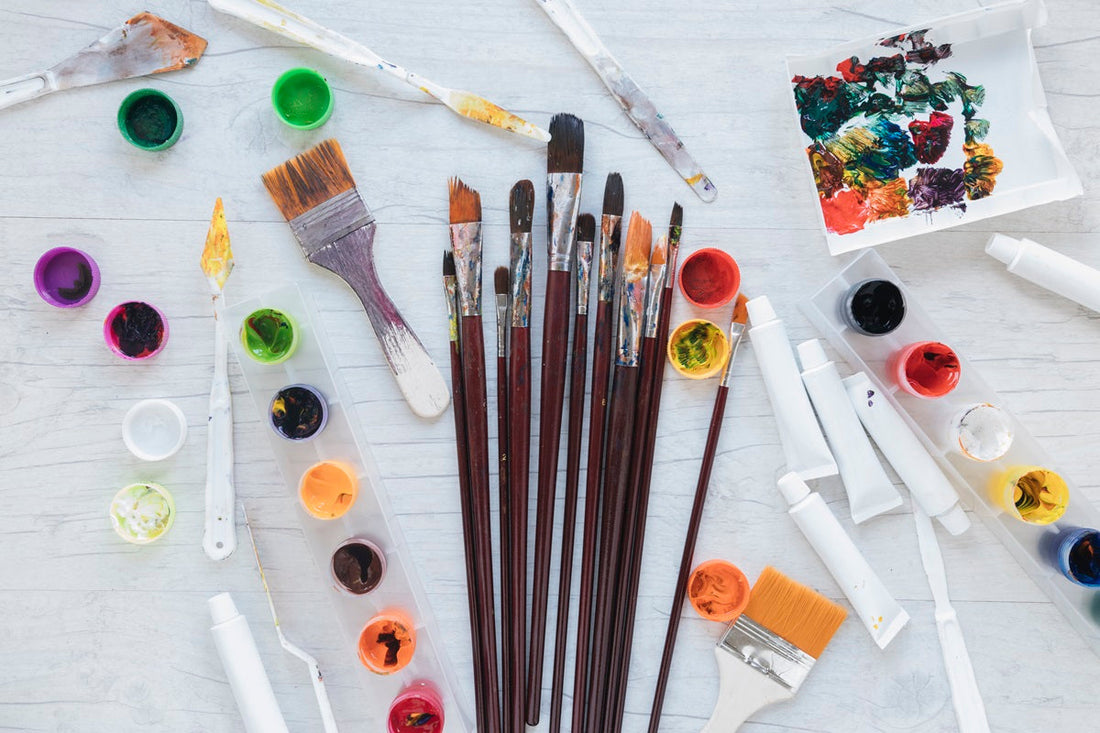
Acrylic vs. Oil: What’s Best for Paint by Numbers?
Aktie
Paint by numbers kits have evolved tremendously since their inception, and one of the most common questions people ask when starting a new project is: should I use acrylic or oil paint? Each medium offers distinct characteristics, benefits, and challenges—and understanding these can help you choose the best fit for your style, skill level, and goals.
In this article, we’ll dive into the key differences between acrylic and oil paints, the pros and cons of each for paint by numbers kits, and how to decide which option is right for your next masterpiece.

What Are Acrylic and Oil Paints?
Before comparing them, it’s helpful to understand what these two paint types actually are:
- Acrylic paint is water-based, fast-drying, and widely used in paint by numbers kits. It’s known for being beginner-friendly and easy to clean up with just water.
- Oil paint is made by suspending pigments in oils like linseed or safflower oil. It dries slowly, blends beautifully, and has been favored by classical artists for centuries.
Acrylic Paint: The Standard for Paint by Numbers Kits
Most commercial paint by numbers kits come with acrylic paints—and for good reason. Acrylics are vibrant, non-toxic, quick to dry, and easy to work with. Here are the main advantages:
Pros of Acrylic Paint:
- Dries quickly: Great for fast results and layering.
- Water-soluble: Easy cleanup and no need for chemicals.
- Low odor: Safe to use indoors and around children.
- Affordable and accessible: Widely available and budget-friendly.
- Beginner-friendly: Ideal for those new to painting.
Cons of Acrylic Paint:
- Dries too quickly for some: Blending colors can be tricky.
- Color darkening: Colors may dry slightly darker than they appear wet.
- Fast drying time means less room for error.
Acrylic paint is ideal for people who want to complete their paintings efficiently and without a lot of mess. It’s also easier to correct mistakes—just paint over them once the area is dry.
Oil Paint: A Richer, Traditional Medium
Oil paint offers a very different experience. While not as common in standard kits, some higher-end or custom paint by numbers kits offer oil options. Here’s what to expect:
Pros of Oil Paint:
- Long drying time: Allows for rich blending and smooth transitions.
- Vibrant, long-lasting color: Oil paintings maintain their intensity over time.
- Professional finish: Rich texture and depth for gallery-style results.
- Greater control for realism: Especially in custom kits with fine detail.
Cons of Oil Paint:
- Longer drying times: May take days or even weeks to fully dry.
- Requires solvents: For cleanup and thinning, you’ll need turpentine or mineral spirits.
- Strong odor: Not ideal for enclosed spaces or sensitive users.
- More expensive: Oil paints and brushes tend to cost more.
Oil paint is best for painters with more time, a dedicated workspace, and a desire for professional-quality results. It’s also well-suited for those who enjoy the meditative aspect of slowly building up layers and texture.

Comparing Acrylic and Oil for Paint by Numbers
Here’s a side-by-side comparison to help you choose:
| Feature | Acrylic Paint | Oil Paint |
|---|---|---|
| Drying Time | Fast (minutes to hours) | Slow (hours to days) |
| Cleanup | Water | Solvent (turpentine, mineral spirits) |
| Odor | Minimal | Strong |
| Blendability | Moderate (dries fast) | Excellent (longer open time) |
| Finish | Matte to satin | Glossy, rich, textured |
| Skill Level | Beginner to intermediate | Intermediate to advanced |
| Price | Lower cost | Higher cost |
| Ideal for | Quick projects, kids, first-timers | Detailed portraits, realism, pro finish |
Choosing Based on Project Type
For quick and fun projects: Acrylic is the way to go. It’s easy, safe, and forgiving.
For portraits or realism: Oil paints give you more time and control for skin tones and subtle shading.
For kids and classrooms: Always choose acrylic for safety and ease.
For detailed custom kits: If you’re recreating a beloved pet or a wedding photo, oil may provide the depth and quality you’re after—if you’re up for the challenge.
Tips for Using Acrylic in Paint by Numbers
- Don’t overload your brush—thin layers work best.
- Keep a damp cloth nearby to wipe mistakes before they dry.
- Seal your finished painting with a clear acrylic varnish to protect it and add a slight sheen.
- Always close paint pots tightly—acrylic dries fast, even in containers.
Tips for Using Oil in Paint by Numbers
- Work in layers—let areas dry before adding more detail.
- Use a minimal amount of solvent and ventilate your workspace.
- Store your painting flat while drying to avoid dust.
- Clean brushes thoroughly with mineral spirits or specialized brush cleaner.
What About Mixing Acrylic and Oil?
You might wonder if you can combine both types of paint in one kit. The short answer: it’s not recommended.
Oil and acrylic don’t mix well. You can paint oils over dried acrylic, but not the reverse. Doing so can cause cracking or peeling over time. For a consistent and lasting result, stick with one medium per project.
Final Thoughts
Both acrylic and oil paints offer fantastic creative experiences—each with their own advantages. For beginners, busy schedules, and fast gratification, acrylic is hard to beat. For seasoned hobbyists, professional artists, or anyone seeking a more immersive and luxurious painting process, oil offers depth and beauty that can’t be matched.
Ultimately, the best paint for your paint by numbers project depends on your personal preferences, environment, and goals. Whichever you choose, you’ll be part of a joyful tradition that makes art accessible to all—one number at a time.
